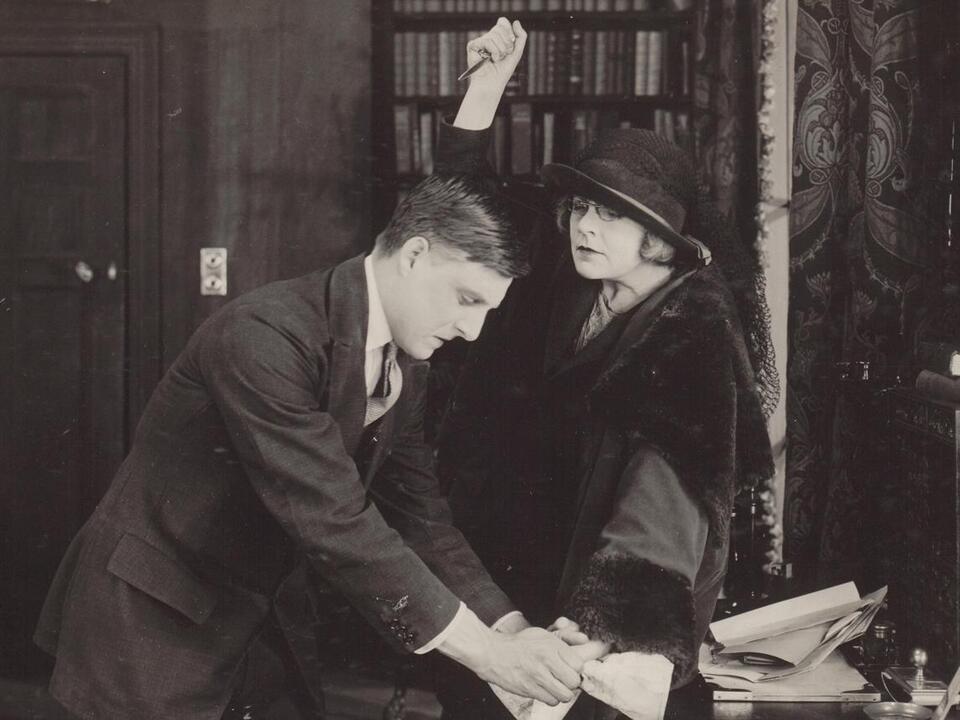Physical Address
304 North Cardinal St.
Dorchester Center, MA 02124
Physical Address
304 North Cardinal St.
Dorchester Center, MA 02124

A silent Sherlock Holmes film starring Arthur Conan Doyle’s favored impersonator, Eille Norwood, is set to be screened for the first time since its 1922 release following an extensive restoration by the BFI National Archive.
Titled “The Golden Pince-Nez,” the film is a classic tale of Holmesian deduction, based on a Conan Doyle short story first published in the Strand magazine in 1904.
This restoration will premiere on 16 October as part of the BFI London Film Festival.
Norwood, who played Holmes in numerous screen adaptations, was highly praised by Conan Doyle himself. “His wonderful impersonation of Holmes has amazed me,” Conan Doyle once remarked. “Norwood had that rare quality that can only be described as glamour, which compels you to watch an actor eagerly even when he is doing nothing. He has a quite unrivaled power of disguise.”
Bryony Dixon, the curator of silent film at the BFI National Archive, recounted how Norwood had even discussed the role with Conan Doyle. Though later actors like Basil Rathbone and Jeremy Brett also gained acclaim for their portrayals, Norwood was a serious stage actor who deeply immersed himself in the character. Dixon noted, “I think he went a bit ‘method’ with it and really studied the stories and the character.”
The Golden Pince-Nez film stays true to Conan Doyle’s original story, as the author’s works were licensed to Stoll Pictures on the condition that the screen adaptations would closely follow his plots. “It involves Holmes using his classic powers of deduction,” Dixon explained. “[In] a complicated plot … there’s been a murder … of a professor’s secretary and Holmes is called in. They have found a pair of women’s pince-nez glasses [clutched by the victim], and he deduces her exact description just from her glasses.”
In the original narrative, Holmes instantly discerns that the glasses were “snatched from the face or the person of the assassin,” adding, “That they belong to a woman I infer from their delicacy … My own face is a narrow one, and yet I find that I cannot get my eyes into the center, or near the center, of these glasses. Therefore the lady’s eyes are set very near to the sides of the nose.”
The Golden Pince-Nez was among 45 episodes – each lasting up to 30 minutes – that Norwood made between 1921 and 1923, as well as two feature films. The premiere will also feature two other restored episodes: “A Scandal in Bohemia,” in which Holmes uncharacteristically falls for a woman, and “The Final Problem,” where Holmes meets his arch-enemy, Moriarty.
These are the first titles in the BFI’s “mammoth multi-year restoration project,” Dixon shared, noting that Norwood’s films were well-received in their day by audiences who flocked to the cinema in their millions. “This was culturally more like us watching TV,” she said.
The BFI National Archive holds the world’s largest film and television collection. It acquired the original negatives for the Holmes series in 1938, and in the early 1950s, duplicated the two-reel camera negative of The Golden Pince-Nez onto safety stock before the original decomposed.
“The quality is pretty much as good as it gets,” Dixon said of the restoration, adding that it closely resembles how the original audiences viewed it.
Roger Johnson, the editor of the Sherlock Holmes Journal, expressed his eagerness to see the restored print of The Golden Pince-Nez. “What would have impressed Conan Doyle about Norwood was the application he put into his acting. He’d obviously made himself very familiar with the original stories.”
“Conan Doyle said he had an absolute mastery of disguise, and there are photographs of Norwood in convincing disguises. You can see why his Watson [played by Hubert Willis] is astonished that it’s Holmes underneath. It was the way he held himself. It’s all very well wearing different clothes and putting on a false nose, but to take on the movement, the posture – that, as much as anything, is what was convincing. It did impress Conan Doyle.”
The premiere will be hosted at Alexandra Palace with a specially commissioned live score in a new partnership between the BFI and the Royal Academy of Music.
This restoration project has been made possible through an agreement between the BFI and Andrew Lloyd Webber’s The Really Useful Group.
Source: The Guardian



